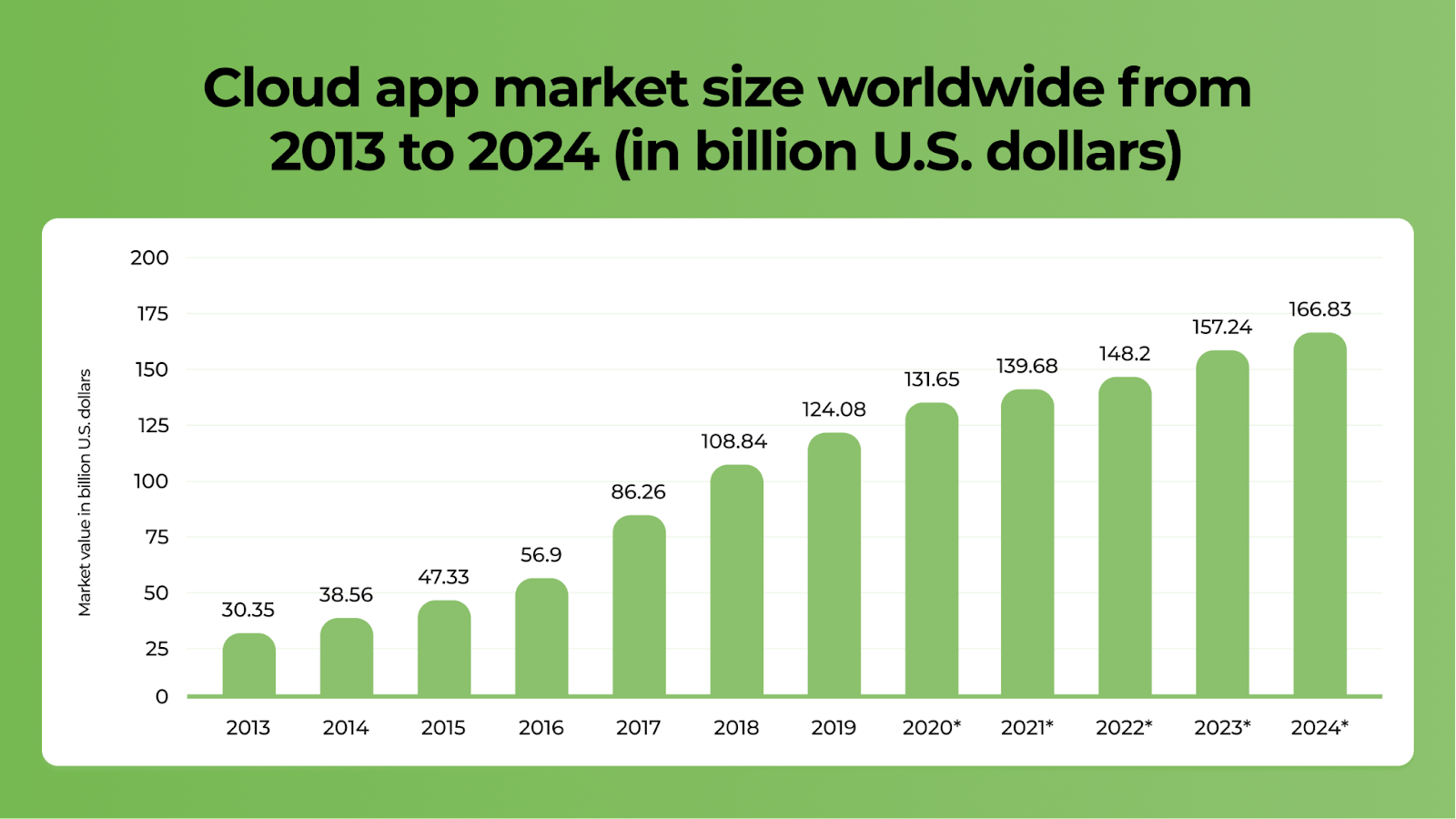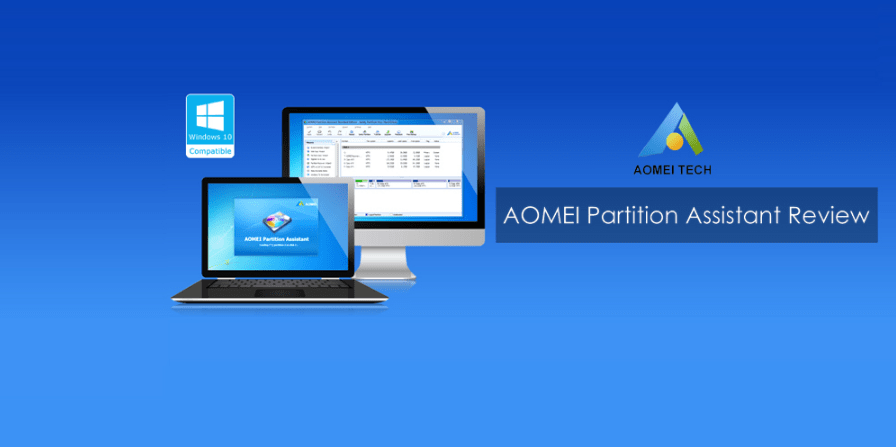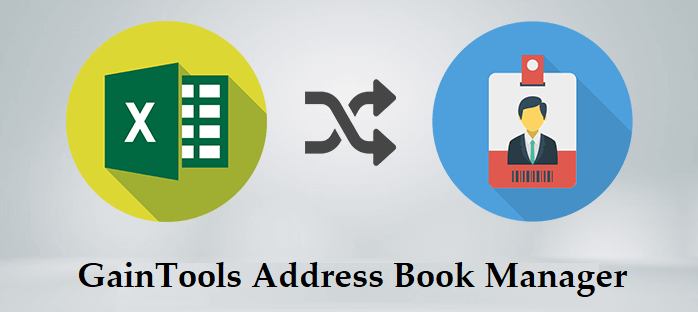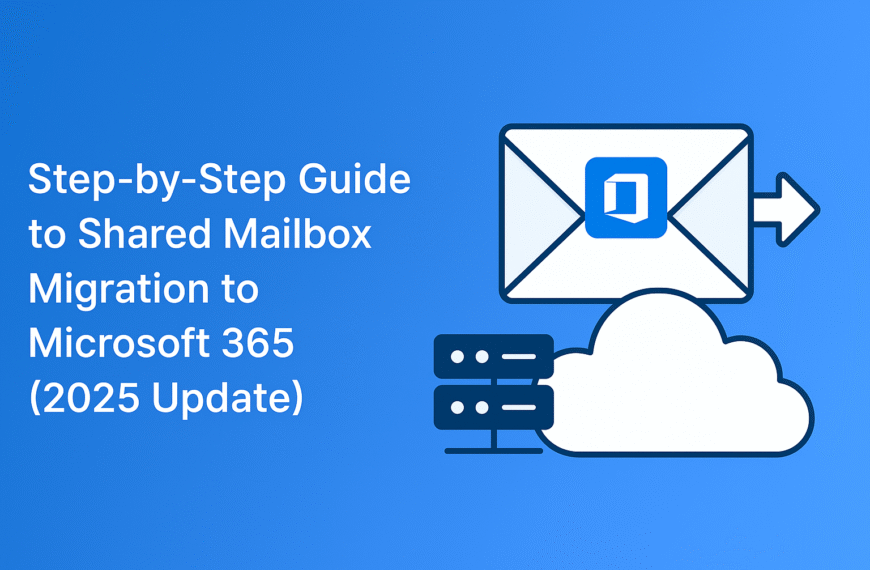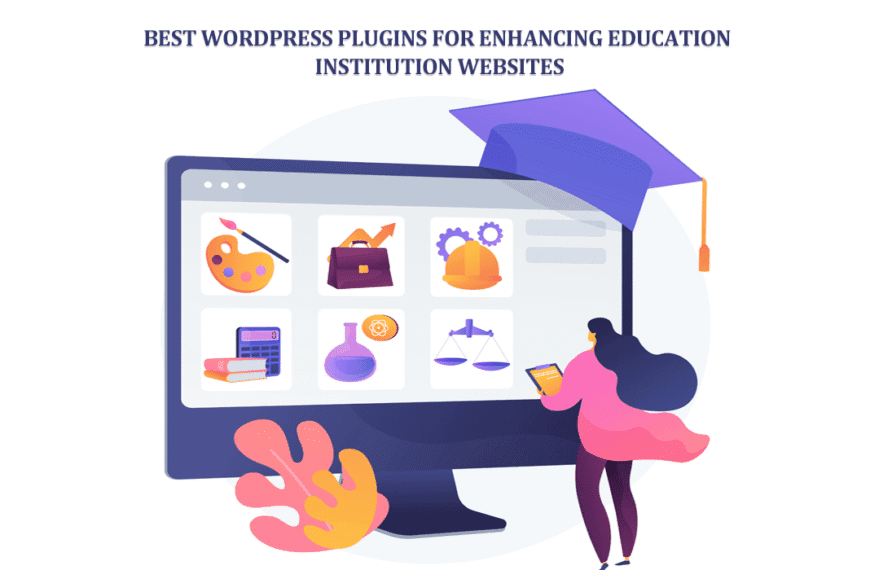The number of businesses opting for a cloud environment in the development of digital products continues to grow rapidly year after year. This fact arises from the wide range of benefits that companies receive by applying this solution. First and foremost, it’s excellent scalability, enabling businesses to expand.
This article will explain the key reasons to go for a cloud app creation architecture as well as how to complete it to avoid pitfalls and succeed.
Potential of Cloud Solutions
Cloud applications are a booming and promising modern domain. That is why 60% of global companies select such an architecture to obtain enhanced security. In addition, 77% partly or entirely have moved their software to a cloud. 80% of companies use Amazon Web Services (AWS) as the fundamental cloud environment, and 67% apply Microsoft Azure.
Besides, the forecasts for this industry are also pretty potent: by 2024, the cloud app market value worldwide is projected to progress to $166.83 billion.
The leading domains within the cloud app creation by 2023 are telecommunications, retail, insurance, as well as banking. This is conditioned by the fact that such domains have to process vast loads of data securely. Thus, a cloud environment is a beneficial way to fulfill such tasks safely.
Cloud Application Concept
Cloud-based technologies provide a row of diverse opportunities (databases, storage, servers, etc.). This refers to a third-party hosted infrastructure ensuring computing reserves (free of charge or requiring certain investments). In a nutshell, cloud solutions enable entities to apply the necessary resources/spaces/services without supporting and managing them.
Within the mobile app development process and further deployment, we may single out the three main types of the cloud environment:
- Private cloud (protected, publically inaccessible space for data)
- Public cloud (available through any device)
- Hybrid cloud (unites characteristics of the two previous types)
Cloud-based applications divide the processing logic as well as the data storage between the customer-side (accessible for clients, interactive) and the server-side (essentially performing the data processing).
- The amount of requirements towards the gadget to run the cloud app is minimal as all the application’s data is located in the cloud storage.
- Storing the data on the gadget enables offline access and automatic refreshing as soon as the device is back online
- The cloud storage ensures access to the data through any device
Let’s now consider types of applications with cloud environment exist:
SaaS (Software as a Service)
This type is used through mobile software/ browsers. It enables clients to run the app via any gadget with no need for downloading and configuration. Google Apps, Salesforce, and AWS are among the other popular SaaS solutions.
PaaS (Platform as a Service)
With this type, you may apply all the solutions required for app architecture, relying on a cloud vendor for the development instruments and platforms. They deliver both software and hardware to simplify the cloud app development process. Heroku and OpenShift are great and well-known development frameworks.
IaaS (Infrastructure as a Service)
IaaS serves as a vendor that operates your entity’s infrastructure: storage, servers, network, and vitalization via the cloud (public/ private). Excellent examples which provide such services are DigitalOcean and Microsoft Azure. Products of this type, you may know, are Zoom, PayPal, Slack, Vimeo.
Cloud-Based Software: Advantages
Access to the distant server for data storing is the primary benefit of cloud apps. Let’s talk about some more benefits of such solutions.
- Decreased expenses. Cloud environment helps in reasonable resources allocation. Having easy access to all the essential information, you’ll be able to save the deployment resources. In addition, you’ll have on option to be charged for instruments and the amount of storage you actually use.
- Data consistency. Cloud services allow saving data to a cognate place as well format. Thus, all parties are accessed to the cloud will easily keep up with all the changes there.
- Flexibility. Such an environment ensures enhanced flexibility in contrast with local server hosting. Besides, it is able to provide more bandwidth instantly.
- Scalability. Applications based on the cloud will fit in all the business scales as well as requirements and will successfully keep up with their dynamical challenges.
Development Challenges of Cloud-Based Software
Here are the common pitfalls and aspects to pay attention to when developing cloud-based applications:
- Protection. You are responsible for the clients’ security within the software. Therefore, you should deliver guaranteed safety to them. What’s more, your product should comply with various encryption standards as well as use the SSL certificate.
- Solidity. Another challenge you will face is the selection of a credible framework for the software architecture. AWS is one of the most widely applied, as it’s secure, stable, and highly reliable.
- Operation. Regardless of the customers’ location, a qualitative application should load in less than 3 seconds. Moreover, you may increase this indicator by applying content delivery networks (CDN).
- Scalability. Lots of cloud vendors affirm that they are able to ensure great scalability. Yet, not all of them can deliver it to clients. Hybrid models are considered to be the best choice within scalability, so you should select them.
Cloud App Architecture Process
Let’s dive deeper into the development process of cloud-based applications:
- The market as well as audience requirements and their analysis
- Selecting the software development team among the most common hiring options: freelancers, in-house reams, outsourcing companies
- Defining the app’s architecture model, service model, data migration to the cloud, and selecting the vendor
- UI/UX designing process of the future interface and elements’ layout of the product
- Development of the app and implementation of its functionality
- Quality Assurance and verifying the app’s performance with all the bugs eliminated
- Deploying the product to the App Store/ Google Play complying with the guidelines of the chosen platform
Summarize
Cloud technologies ensure a broad spectrum of opportunities for your entity, making it more competitive, efficient, and solid. To achieve state-of-art software, you should definitely consider a cloud-based architecture. To build a top-quality app, you should also select a credible software development vendor with proven in-depth experience in cloud app creation. Thus, the final product will perform flawlessly and will be rapidly launched to increase your client base very soon.
Author’s bio:
Yuliya Melnik is a technical writer at Cleveroad. It is a web and mobile app development company in Ukraine. She is passionate about innovative technologies that make the world a better place and loves creating content that evokes vivid emotions.

